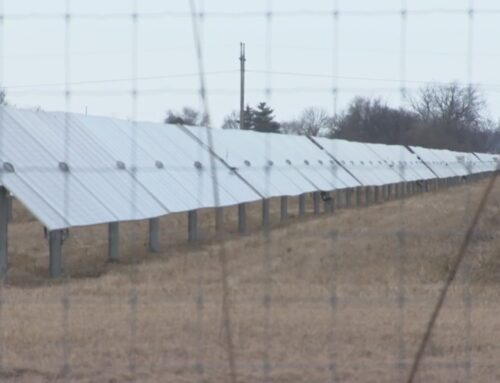Green energy challenges may reshape Long Island energy plans
June 21, 2025
With new leases for offshore wind power stalled and two contested gas pipelines into New York back in play, Long Island power brokers have some major decisions to make about how energy will be generated in the coming decade.
An energy road map for Long Island drawn up in 2023 has offshore wind as the primary source of power as state mandates foresaw the closure of primarily natural-gas fired power plants over the next 15 years. The climate law passed under former Gov. Andrew M. Cuomo expected some 9,000 megawatts of offshore wind power on the grid by 2035, and carbon-free energy by 2040.
But many of those mandates are now in question as the Trump administration and Congress move to stall green energy by withholding federal permits for offshore wind and threatening to reduce or eliminate tax credits needed to subsidize those and other projects, such as solar, battery storage and geothermal energy.
Some veteran energy experts on Long Island say the setbacks for green energy, while perhaps temporary, may require a rethinking of existing plans to retire the region’s oldest fossil-fuel power plants and perhaps dust off shelved plans to overhaul them. A 2017 LIPA review had recommended against overhauling the old power plants.
- With new leases for offshore wind power stalled and two contested gas pipelines into New York back in play, Long Island power brokers have some major decisions to make about how energy will be generated in the coming decade.
- An energy road map for Long Island drawn up in 2023 had offshore wind as the primary source of power as state mandates foresaw the closure of primarily natural-gas fired power plants over the next 15 years.
- But many state mandates are now in question as the Trump administration and Congress move to stall green energy by withholding federal permits for offshore wind and threatening to reduce or eliminate tax credits needed to subsidize those and other projects.
“Given the challenges facing green energy, we need to have an open mind on every option, including those that may not have been viable in the past, including natural gas options,” said Kyle Strober, executive director of the Association for a Better Long Island, a developers’ group.
Long Island has ample energy to supply current needs, plus an excess of nearly 1,000 megawatts — the equivalent of three medium-sized power plants — on peak demand days. In a presentation last month, PSEG Long Island, which operates the grid under contract to LIPA, said that even in the event of extreme summer heat where peak demand reaches 5,617 megawatts, the utility would still have 988 megawatts more than it needs, with local plants delivering 4,349 megawatts and power cables just over 2,000 megawatts. A megawatt powers between 800 to 1,000 homes.
LIPA, as a result of decisions made nearly a decade ago, is the only utility in the state that is drawing energy from an offshore wind farm, with a 130-megawatt array off the coast of Rhode Island and Massachusetts feeding the power-starved South Fork. Another project called Sunrise Wind could bring its 924 megawatts to the grid by 2027, assuming the Trump administration or other factors don’t conspire to hinder the project.
A separate project called Empire Wind is now back under construction off Long Island after the administration stalled it for nearly two months this spring; it will send its 810 megawatts of power to New York City’s grid by the end of 2026.
Meanwhile, the Williams Cos. this month revived two natural gas proposals into the region, including the Northeast Supply Enhancement project that, if approved and built, would ease Long Island supply constraints. The projects are under review by the state Department of Environmental Conservation after that agency previously rejected them under Cuomo.
While there is no open talk of scuttling Cuomo-era green-energy mandates, Gov. Kathy Hochul’s administration last year signaled a new openness to development of “advanced” nuclear power, primarily upstate where plants are already operating. Her administration could take the next step as soon as this month with plans for at least one new nuke plant upstate, people briefed on the plan say.
Paul DeMichele, a spokesman for Hochul, noted the state already has a 50% zero-emission grid, much of it tied to long-running hydropower, and said the governor “recognizes that we can only continue to serve as that good example if the lights stay on and costs are affordable, and she will use every tool at her disposal to ensure that happens.”
Hochul, he said, is “embracing an energy policy of abundance to make electricity more affordable and meet the growing demand of businesses looking to expand here.” That includes “new renewable power and nuclear power,” while helping to salvage Empire Wind from a federal shutdown, DeMichele said.
But her green-energy critics aren’t happy. Jeanne Bergman, a director of the Sane Energy Project, which wants renewables to replace natural gas, said Hochul “wants to present herself as climate leader, but when there are real opportunities to influence climate policy in legislation or at the Public Service Commission, she does not act. She’s a constant disappointment.”
Energy experts suggest a rethinking of the past decade’s energy mandates could be in order.
Robert Catell, former chairman of National Grid U.S. and now chair of the National Offshore Wind Research and Development Consortium, said LIPA’s shelved plans to upgrade antiquated natural gas plants may need to be reconsidered.
“With the delays and uncertainty of offshore wind and the increasing electric demand combined with reduced [excess energy] margins on peak days, the natural gas plants on Long Island are necessary in the near term and provide an opportunity to provide a long-term solution through repowering to highly efficient environmentally clean electric power producers,” Catell said in a message.
LIPA had devised strategies to overhaul or replace old National Grid-owned plants in Port Jefferson, Island Park and Northport to help handle an anticipated increase in power demand in 2035. But the plans were shelved when green-energy mandates and a push toward more efficient power usage changed the power outlook for the region. Even a plan for a second, larger new natural-gas powered plant called Caithness II was shelved as it was not needed at the time.
Catell said overhauling the old plants also may be the most economical way forward as prices for green energy skyrocket amid rising interest rates and potentially lower federal subsidies. Repowering the old plants to efficient new ones “can be accomplished in a relatively short period of time at the lowest capital cost per megawatt,” Catell said. But that means the state must give real consideration to the new gas pipelines being considered for the region, he said.
Opponents say committing to more natural gas power for the region is a mistake that would tie Long Island to climate-warming fossil fuels for generations.
“It’s a terrible way to go,” said Bergman. Gas is “not a healthy way to heat homes or cook” and it’s a “bad way to go for the climate.”
Instead, she said, the state and Long Island should turn to thermal energy networks, including geothermal systems that use the earth’s steady temperatures to facilitate heat pumps for heating and cooling of homes, offices and schools.
Contracts for most of the National Grid plants are up for renewal in 2028. LIPA itself hasn’t telegraphed any new plans to dust off the repowering plans. Officials declined to be interviewed or to answer Newsday questions on the subject.
National Grid, in a statement, said, “We will continue to work closely with our regulator as well as state and federal partners to evaluate all options to address the region’s growing and critical energy needs.”
LIPA’s 2023 climate-centric “integrated resource plan” plotted retirement of some of the dozens of smaller peak-power plants, and even to begin to power down the region’s largest as wind-power took over.
By 2030, the LIPA plan foresees the retirement of up to 376 megawatts of capacity at the E.F. Barrett power station in Island Park, up to 376 megawatts at the Port Jefferson power station and up to 387 at the Northport station. Wind farms were to make up the bulk of needs by 2031, LIPA officials said at the time. At least one offshore wind array with its 1,260 megawatts of power destined for Long Island, Empire Wind 2, has since been canceled.
Meanwhile, the prospect of a 750-megawatt Caithness II is already being examined for revival as the U.S. Department of Energy eyes advanced computing at strategic locations across the nation. The ambitions depend on whether Brookhaven National Lab is chosen for a critical data center; if not, the incentive for Caithness II could be greatly reduced.
One of the officials who oversaw LIPA’s power plans, including potentially overhauling the old plants, was Paul DeCotis, a former a senior vice president for power markets who is now a senior partner at West Monroe Partners consulting firm. In an interview, he said upgrading the old plants could be “one of the tools in the tool kit” to keep the grid reliable until green energy is more widely available.
“We can’t risk the system being unreliable” in the face of an unexpected “delays in new renewable and offshore wind projects,” said DeCotis, a former deputy energy secretary for New York State.
DeCotis said the economics of repowering the old power plants “would likely still hold” given the relatively low prices for natural gas in recent years.
DeCotis said the state’s plans to construct vastly increased power cables, originally to help accommodate an influx of wind power, also could help. One called Propel NY Energy envisions vast new cable capacity for the downstate region, while providing a high-voltage link to the upstate grid — helpful if new nuke plants are available to bring that power down to Long Island.
Search
RECENT PRESS RELEASES
Related Post





